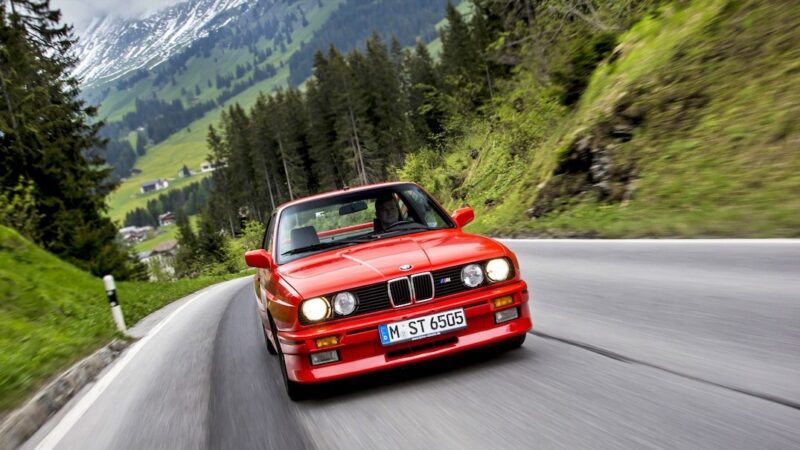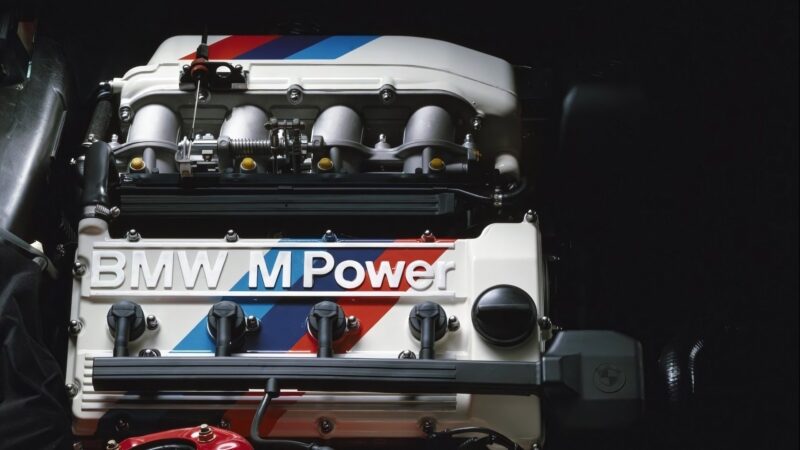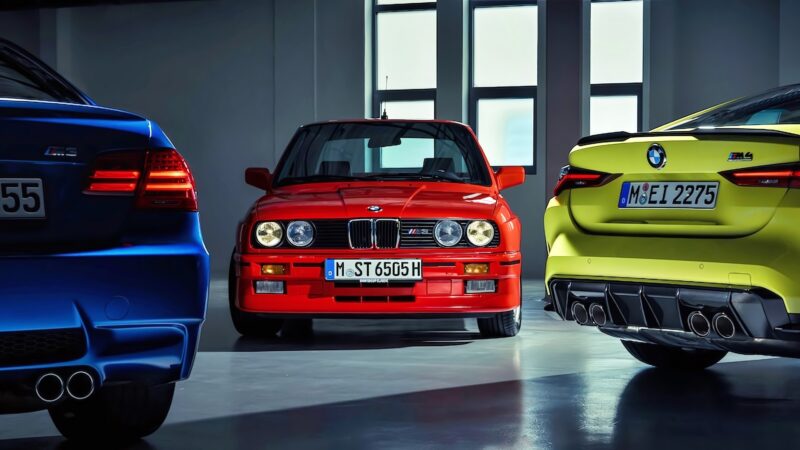Few letters in the performance car world carry as much weight or reverence as the “M3”, and no M3 is more iconic and foundational than the original one that kicked it all off. Born out of a necessity to homologate the 3 Series back in the 1980s, the BMW E30 M3 was designed with the sole purpose of winning in motorsports (hence the M), and win it did. From DTM (Deutsche Tourenwagen Meisterschaft), i.e, German Touring Car Championship titles to rally stages, the OG M3 not only dominated on the racetrack but also won the hearts of purists and now carries a legacy that spans over three decades and the five generations of the M3 since. As a consequence, demand remains high among the enthusiast crowd, and if you are considering buying one today, here’s everything you should know before you wire over five figures or sign on the dotted line.
The E30 M3 Story: Race First, Road Second
Unlike most performance cars, the E30 M3 didn’t start as a road car tweaked for. Instead, it was a race car adapted for the road. BMW had to homologate the M3 for Group A racing in the mid-1980s, which meant 5,000 units had to be built on the standard production line in Munich, not the dedicated motorsport facility at Garching. Styling-wise, the M3 looked like no other E30, sharing nothing but the hood with the 3 Series of the time. Every other panel, from the subtly boxed fenders that lend Delta Integrale vibes, the higher rear decklid, and the more aggressively raked rear window, were unique to this model. Unlike modern BMW M cars that feature far too many M badges, the E30 M3 does away with just two and a considerably smaller kidney grille compared to the current model.
Inside, expect things to be basic but functional. This was the 80s, after all, but having said that, in typical German fashion, everything is well laid out. You get sports seats, a M-Technic steering wheel and a leather-wrapped M-Specific shift knob. Luxury features like a sunroof, power windows, and air conditioning were available as options and are highly desirable today.
E30 BMW M3 Performance

Yes, the Bavarian marque may be synonymous with straight sixes, but with the E30 M3, BMW went in the other direction by going for a high-revving 2.3-liter four-cylinder unit, the S14 to be specific. This was essentially a watered-down version of the M10 block, and the DOHC head was derived from the M88/M1’s cylinder head, but was cut short to save weight and rev higher, ideal traits of a touring competition car. In U.S.-spec models, power was rated at 192 horsepower and 170 pound-feet of torque, all going to the rear wheels via an H-Pattern Getrag 260 5-speed manual gearbox. Now that may not sound like a lot of power, but by modern standards, the E30 M3 tipped the scales at just over 2,600 pounds.
While it may be more sleeper than screamer, don’t let the under-the-radar looks fool you, because underneath the heavily reworked body were a bevy of performance enhancements. Wider tracks, stiffer springs, stronger bearings, and front anti-roll bars that were linked directly to the MacPherson struts. What all this means is a 0-60 mph dash in the six-second range. Modest today, yes, but the lightweight body, steering feel, and chassis balance should more than make up for it.

E30 BMW M3 Specs
| Engine Displacement | 2.3 L |
| Engine Configuration | Naturally aspirated inline-4 (S14) |
| Horsepower | 192 hp @ 6,750 rpm (U.S. spec) |
| Torque | 170 lb-ft @ 4,750 rpm |
| Transmission | 5-speed manual (Getrag 260) |
| Curb Weight | 2,635 lbs (with fluids, DIN) |
| 0–60 mph | 6.5 seconds (approx., U.S. spec) |
| Top Speed | 146 mph |
What To Look For Before Buying An E30 BMW M3

As with any used example, even more so for a desirable high-performance model, you want to look for the car’s original window sticker, build sheet, maintenance, and service records. Mechanical condition matters, so carefully assess the condition of the four-cylinder unit, the gearbox synchros, and the suspension bushings.
Unlike more collector-grade exotics, most of these cars were meant to be driven hard in the real world, so watch out for things like corrosion, especially around the wheel arches, in the trunk, and the floorpan. Modifications are a double-edged sword, and while tasteful mods could potentially enhance your overall experience, think mild ECU tunes, period correct BBS wheels, and suspension tweaks, values typically favor stock or lightly modified examples. While the Cinnabar Red launch color is popular, rare shades like Macau Blue metallic and Sterling Silver metallic can command a premium.
E30 BMW M3 Price
The average price for an E30 M3, according to classic.com, is $86,829, and indeed, high-mileage examples can be had for under six figures, but for cars with lower miles, expect to pay north of $100,000. DuPont REGISTRY currently has several E30 BMW M3s for sale. Of the nearly 18,000 produced between 1986 and 1991, comprising both coupes and convertibles, just shy of 5,000 examples made it stateside. While the E30 M3 EVO II and Sport EVO were never sold in the United States, they were built in even smaller numbers and remain highly desirable overseas.
E30 M3 Alternatives
If you’re willing to look at similar analog performance cars from the late 1980s, early ‘90s, here are some models to consider:
Lancia Delta Integrale
Rally-bred AWD grip and turbo power, though parts and rust can be an issue
Avg. Market Price: $99,732
Mercedes 190E 2.3-16 or 2.5-16 Cosworth
Nearly as rare, with a similar motorsport pedigree and build quality.
Avg. Market Price: ~$25,000
Porsche 944 Turbo S
Sharp handling and balance, with similar build era character, a Future classic in the making
Avg. Market Price: $32,797
Average prices from Classic.com
Why The E30 M3 Still Matters

The E30 BMW M3 may not be the fastest or most powerful M3 of all time. Yes, today’s M3s make well over 500 horsepower, but they also weigh over 3,800 pounds and are packed with an overload of tech. The E30 represents back-to-basics M performance. Lean, analog, and visceral, this caressentiallyy became the blueprint of every M car that followed and will continue to appeal to purists and enthusiasts for decades to come.
Image Source: BMW
FAQs
1. How much horsepower does an E30 M3 make?
A. U.S.-spec model makes 192 horsepower, but the Euro model produces over 200 horsepower from the inline four-cylinder engine. Sport Evo models make 238 hp.
2. Is the E30 M3 fast?
A. The E30 isn’t as quick as modern M cars, with the dash to 60 mph taking 6.0 seconds and the top speed of 146 mph. But the DTM-bred OG M3 has handling prowess going for it.
3. What’s the rarest E30 M3?
A. The Roberto Ravaglia Edition and Sport Evolution variants are the rarest and most collectible E30 M3s ever produced.
4. Are E30 M3s Reliable?
A. While mechanically simple and robust, E30 M3s are over three decades old at this point, and things like rust, wear items, and neglected examples can cost you.
5. Is the E30 M3 worth the money?
A. Given its motorsports pedigree, for the purists out there, absolutely. For collector value, driving feel, and historic significance, few cars from the era offer what the E30 M3 does.

